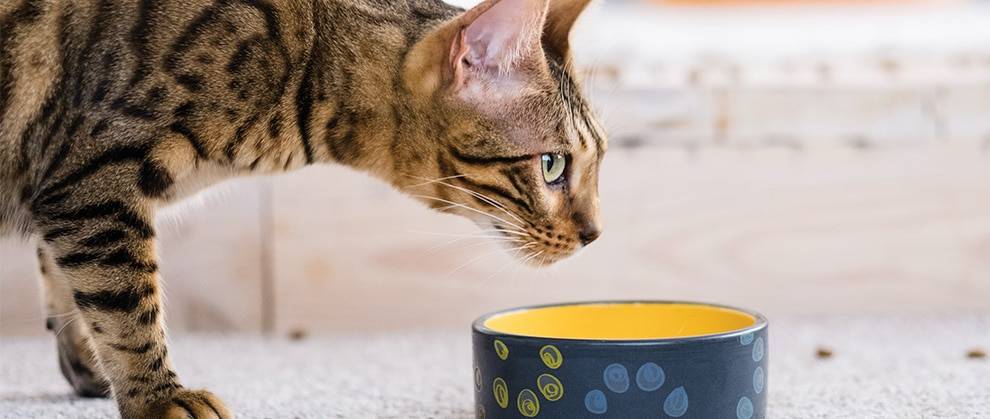[ad_1]
In veterinary practice, urine sediment is commonly evaluated as part of a complete urinalysis performed as routine screening for urinary tract and systemic disease. Identification of formed elements in urine sediment (including cells, casts, and crystals) in wet-mount preparations requires training and expertise. Dry mounts are easy to prepare and routine stains can be used for more in-depth patient-side in-clinic evaluation.
Case Selection: Wet-Mount Versus Dry-Mount Preparations
As part of a complete urinalysis, wet-mount samples are routinely reviewed unstained. At times, staining a wet-mounted urine preparation by using a urine sediment stain can improve visibility. However, staining can sometimes hinder wet-mount evaluation by introducing artifacts (stain precipitate, microbial overgrowth); cannot preserve cellular morphology (a common misconception); and, for those learning urine sediment, can make the evaluation of wet mounts with artifacts more challenging than directly visualizing air-dried preparations stained with a routine in-clinic aqueous quick stain. Dry mounts stained with aqueous Romanowsky quick stain enable direct observation of neutrophil and bacterial morphology without refractile artifacts and the Brownian motion (spontaneous movement of small particulates in fluid samples) seen on wet mounts. Timely analysis of wet-mount samples is paramount as formed elements in urine are labile and can degrade outside the body. Creating a dry-mount slide from the 10% urine sediment preparation is highly desirable because it enables further identification by using routine staining techniques that can serve both teaching and diagnostic purposes. The dry nature of the preparation allows for use of higher magnification oil objectives and creates a stable sample for analysis, including shipment to a reference laboratory if desired.
A dry-mount examination cannot replace a wet-mount examination for quantifying cellular constituents, but staining a dry-mount preparation substantially improves qualitative and morphologic assessment of bacteria,1,2 nuclear morphology, and cell identification.3 Dry-mount examination of stained slides can be added to all routine urinalyses, but diagnostic yield in general practice is highest for a few specific scenarios:
- Samples with active sediment (inflammatory cells, bacteria, fungal elements, or erythrocytes)
- Samples with increased epithelial cells
- Patients with clinical suspicion of urinary tract neoplasia
- Confirmation of casts
- Unidentified elements
- Samples with abundant mucus or crystals as other elements may be “hidden” by these materials (e.g., leukocytes trapped in mucus, numerous amorphous crystals preventing visualization of bacteria)
Sample Preparation
Centrifugation
All samples begin with centrifugation for wet mounts. To prepare a 10% urine sediment for wet-mount microscopic evaluation, start with 5 mL of urine, centrifuge for 5 minutes at 1500 RPM (revolutions per minute), remove 4.5 mL of supernatant by gentle decanting or using a transfer pipette, and resuspend pellet in 0.5 mL of supernatant with gentle tapping or gentle aspiration with the pipette to mix. Evaluate wet-mount sediment according to usual protocol by evaluating and counting epithelial cells and casts at a 10× low-power field, and red blood cells, white blood cells, bacteria, and crystals at a 40× high-power field.
To further concentrate the sample and increase cellular yield for viewing, an additional centrifuge step may also be completed before dry mounting the material (because quantification is not performed). This additional step involves centrifuging at 1500 RPM for 5 minutes and removing almost all remaining supernatant (preferably by pipette method), leaving mostly pelleted material with minimal fluid. The twice-concentrated sediment pellet is then used to prepare the dry-mount slide.
Slide Preparation
If desired, a dry mount can be prepared by using 1 drop of the 10% urine sediment according to the blood push film technique (see blood smear preparation at eclinpath.com/hematology/instructional-videos), line preparation method (see line preparation at eclinpath.com/cytology/effusions-2/line-smear-compilation-copy), or the ribbing method (FIGURE 1). Regardless of the slide preparation method used, to retain maximal material for evaluation, ensure that the sample does not run over the short or long edges of the slide.
In the clinic, the author prefers to perform the additional centrifuge step because it creates drier sediment with less drying time as well as more concentrated cellular material for viewing. The author also uses the ribbing method for slide preparation to create multiple concentrated line preparations for evaluation. Most reference laboratories use a special cytocentrifuge to prepare slides, and dry-mount samples are routinely reviewed according to variations of the criteria provided in the bulleted case selection list previously mentioned.
Drying
Dry-mount urine sediment slides must be allowed to air dry naturally or by application of a warm air gun (or a hair dryer) on the cool setting before staining; if a slide is not completely dry, the material can wash away in fixative. Heat fixation will alter cell morphology and is contraindicated for all dry preparations (urine, blood, and fine-needle aspirate cytology samples).
Staining
The dry-mount slide is then stained with an aqueous Romanowsky stain (quick type) according to the manufacturer’s instructions for in-clinic review. Alternatively, the prepared slide can be shipped (unstained or stained) to a reference laboratory for further evaluation.
Viewing
Examining wet-mount versus dry-mount urine sediment preparations will require adjusting the microscope settings for maximal viewing.
Wet-Mount Preparation: Examination of wet mounts requires lowered light for increased refractility, which can be accomplished by lowering the condenser (moving the condenser away or down from the glass microscope stage) using the condenser knob or partially closing the iris diaphragm on the condenser by using the dial (toward 0).
Dry-Mount Preparation: The microscope setting for a dry preparation should be similar to that used for hematology/cytology samples, with the condenser raised for maximal light (almost touching the underside of the glass microscope stage area) and the iris diaphragm of the condenser open (toward 1). If dry preparations appear dark, check the iris diaphragm dial as changes are not as outwardly visible as when the condenser is lowered.
Sediment Evaluation
Cells
Epithelial cells seen during wet-mount examination are traditionally classified as squamous or nonsquamous. Further evaluation of nonsquamous epithelial cells using a dry-mount preparation is indicated if transitional (urothelial) cells are increased or when cellular variability suggests atypia. Air-dried preparations allow for a more detailed examination of nuclear features, which can be used to screen for and diagnose neoplasia. Rarely, due to their small size, renal tubular epithelial cells can be mistaken for leukocytes on unstained preparations. Leukocytes are often easy to identify as a general category on wet-mount preparations, although further differentiation by specific type is often not possible without stain. Leukocytes are often neutrophils, although in some cases they may not be and further identification using stain can be helpful. Cases of eosinophilic cystitis, urinary tract lymphoma,4 and mast cell tumor5 can be misdiagnosed as suspected urinary tract inflammation/infection during routine wet-mount examination but are easily identified on air-dried stained samples.
Crystals
Creating a dry-mount preparation to further identify crystals is usually not helpful unless performed to maintain stability before sending to a reference laboratory for a urine pathology review. Crystals, if retained, can be further viewed on a dry mount, although for many cases, wet-mount analysis is considered superior.
Microbes
Screening for underlying infection in urine wet-mount preparations can occasionally be challenging when microbes are present in low numbers or because of Brownian motion. Brownian motion artifacts can sometimes be mistaken for bacteria, particularly by novice microscopists learning urine sediment evaluation. Bacteria can be confirmed and morphology more accurately assessed by using an oil objective at higher magnification (e.g., 100× objective) than that used for a traditional 40× objective wet-mount examination. A concurrent sampling of the gastrointestinal tract may sometimes occur during cystocentesis (particularly in “blind” unguided samples), which can lead to significant numbers of bacteria or yeast in the absence of concurrent pyuria. Further viewing of the bacterial morphologies can aid in the diagnosis of concurrent enterocentesis, particularly in cases in which spore-forming bacteria; spiral-shaped bacteria; yeast, including Y-shaped forms suggestive of Cyniclomyces species; algal organisms; protozoa; or parasitic eggs are seen. These organisms should not be present in urine samples and are almost exclusively found in gastrointestinal contents; thus, dry-mount staining will enable the identification of probable fecal contamination.
Unidentified Foreign Objects
A key benefit to dry-mount examination is its value for identifying urinary UFOs (unidentified foreign objects). Dry mounts can be powerful learning and training tools for urine sediment analysis and are the primary method many pathologists use for aiding in the evaluation of urinary samples with a UFO. In particular, free-catch urinalysis or urine spontaneously obtained off a surface (including litterbox collections for cats) can contain many different and uncommon contaminants, which may be challenging to identify. In most cases, UFOs are usually clinically insignificant (e.g., pollen, starch granules from glove powder) and can be readily identified or merely excluded from being pathologic by staining.
Clinical Indications For Dry-Mount Examination
- Patients with pollakiuria, stranguria, and possible inflammation or blood in urine (FIGURE 2): Although both dry mounts and wet mounts can be examined, morphologic features of epithelial cells and bacteria are more readily visualized on a stained dry mount under a higher magnification objective.
Figure 2. Urine sediment from a 12-year-old, spayed female bulldog with a history of pollakiuria, stranguria, and possible blood in urine. (A) Unstained wet-mount preparation showing aggregates of epithelial cells, pyuria, hematuria, and low numbers of possible bacteria; 40× objective.
Figure 2. Urine sediment from a 12-year-old, spayed female bulldog with a history of pollakiuria, stranguria, and possible blood in urine. (B) Stained dry mount showing detailed evaluation of the transitional epithelial cells, pyuria, hematuria, and confirmed evidence of bacterial infection (bacilli); magnification 100× oil objective, aqueous Romanowsky quick stain. Epithelial atypia was suspected to be secondary to bacterial cystitis and recheck examination after clinical resolution of signs did not reveal atypical cells.
- Presence of transitional epithelial cells on wet mount: Differentiation between normal (FIGURE 3A) and abnormal (FIGURE 3B) is easier when nuclear features can be reviewed but requires complete clinical information for definitive interpretation (e.g., presence of stones, masses, clinical signs, and diagnostic images if available).
Figure 3. Transitional (urothelial) cells on dry-mount preparation. (A) Apparently uniform sheet of transitional (urothelial) cells in a dog.
- Confirming casts: Mucus and occasionally other artifacts (e.g., fibers, plant material) can be overinterpreted as signs of renal tubular stasis with cast formation. Dry-mount preparations can sometimes be useful for increasing confidence when confirming the presence of casts (FIGURE 4).
Figure 4. Urine casts. (A) Unstained wet-mount preparation of dog urine, showing fine granular cast; 40× objective.
- Bacteriuria: Routine urinalyses, particularly of free-catch naturally voided samples, may reveal bacteria in low numbers (FIGURE 5A). For cases of suspected urinary tract infection, dry-mount examination can aid in further visualizing bacteria within neutrophils (FIGURE 5B).
Figure 5. Naturally voided samples. (A) Sample from a dog presented for a routine wellness examination. Dry-mount preparation shows extracellular bacterial contamination, consisting of extracellular bacilli and fewer cocci entrapped within mucus.
- Crystalluria: Crystals are best seen on wet-mount preparations, but can often be seen also on dry mounts (FIGURE 6).
Figure 6. Crystals in dog urine. (A) Dry-mount preparation showing bilirubin crystals along with a single granular cast (center) and some amorphous granular material.
- UFOs: Unidentified material is commonly seen on urine wet-mount examination, particularly in free-catch samples. Stained dry-mount preparations allow for further evaluation and visualization of artifacts, including pollen, fibers, lubricant/ultrasonographic coupling gel, and contamination from enterocentesis (FIGURE 7).
Figure 7. Dry-mount preparations showing unidentified material in dog urine. (A) Free-catch urine sample showing plant material with internal cell walls; 60× objective with aqueous Romanowsky quick stain.
- Concurrent enterocentesis: Enterocentesis can inadvertently be performed during cystocentesis. Although an uncommon complication, it should be recognized on urine sediment evaluation (FIGURE 8) to avoid misinterpretation as infection.
Figure 8. Yeast and bacteria in dog urine collected by cystocentesis. (A) Wet-mount preparation showing budding yeast (needle) with morphology consistent with Cyniclomyces species, a common coprophagic contaminant; 40× objective.
Summary
Dry- and wet-mount preparations are complementary techniques for evaluating urine sediment. Wet-mount preparation requires more training and expertise and can sometimes be challenging to evaluate without the use of stain. Dry-mounts can be quickly and easily prepared in the clinic to help further identify cellular components and unknowns. Although quantification of cellular constituents is best performed by wet-mount examination, dry-mount preparations are superior in many cases, including for qualitative and morphologic assessment of bacteria, nuclear morphology, and cell identification.
Author’s Note: An excellent resource for urinalysis, specifically sediment evaluation and elements, is the Cornell University College of Veterinary Medicine online e-textbook (eclinpath.com/urinalysis).
[ad_2]



















